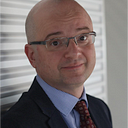Member-only story
Spiral bacteria
An accidental collaboration of two unlikely researchers in an unexpected place led to one of the most radical changes in medical thinking and practice in history. It resulted in the disappearance of stomach ulcers and a spectacular Nobel prize for Medicine.
The City of Perth on the west coast of Australia and its port, Fremantle, are not really the first choices on this planet where you would expect huge scientific discoveries in biomedicine to take place. Such breakthroughs usually occur within very large and wealthy urban conglomerates, to which entire networks of the world’s leading universities gravitate, and where the associated and supporting giants of the pharmaceutical and biotechnological industries have their research divisions — a sector which employs tens of thousands of the most educated people around the world.
That being said, Perth, along with Fremantle, is a real metropolis when compared to Kalgoorlie, a mining town a few hundred miles east of Perth, in Western Australia, where Barry James Marshall was born back in 1951. According to him, “all of these miners owed a lot of money and drank a lot of beer.” So, his mother, who was a nurse, decided that they needed to move before they acquire those same characteristics. His family moved to Perth when he was 8 years old, so Barry went to school there. In high school, he didn’t excel all that much, collecting solid, but mainly average marks. However, at his entrance exam and his interview to attend the Medical School of the University of Western Australia in Perth, he left a great impression, so…
